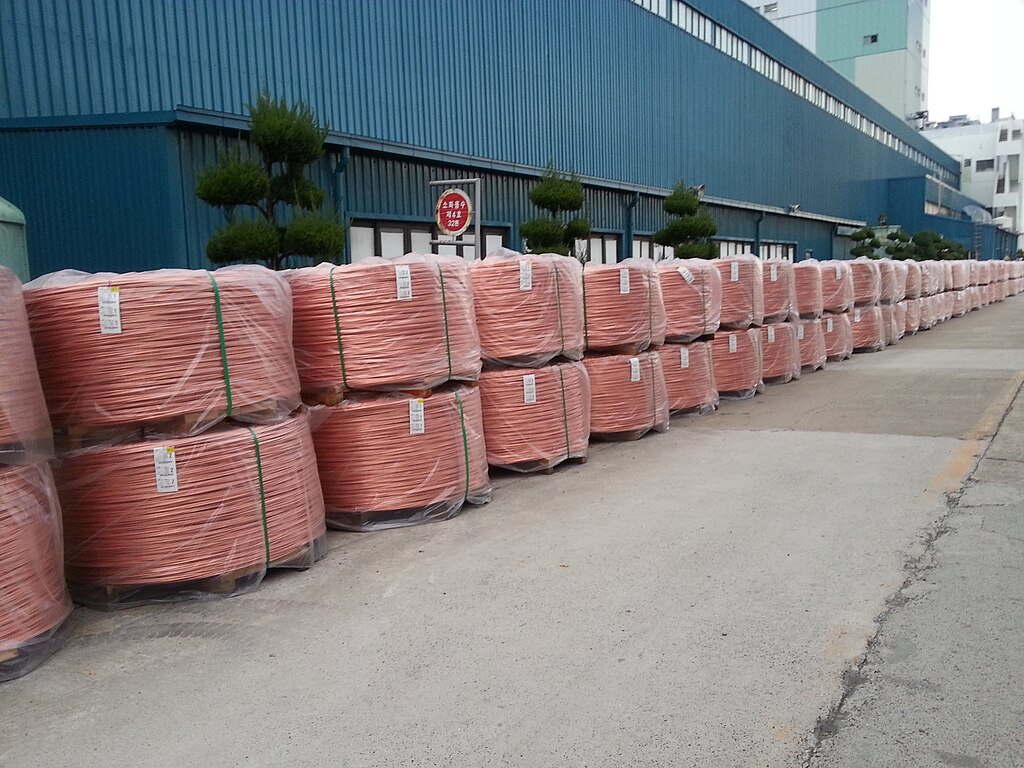Copper markets are on edge as traders anticipate potential U.S. import tariffs under President Donald Trump’s administration. While no official tariff has been imposed, the price gap between the CME and London Metal Exchange (LME) contracts has widened sharply, with CME copper trading at a premium exceeding $1,000 per metric ton. This suggests the market is pricing in at least a 10% tariff, though a 25% duty, similar to those on aluminum and steel, remains a possibility.
The United States relies on imports for about 45% of its copper consumption, making domestic prices highly sensitive to tariff risks. CME copper stocks have rebounded above 100,000 tons, but traders remain cautious. The tariff impact is expected to extend beyond refined copper, disrupting supply chains for copper products, particularly between the U.S., Canada, and Mexico. A 25% tariff on copper imports from these key trading partners could force manufacturers to relocate operations to Asia, affecting the automotive industry and copper wire production.
North America's copper trade is deeply integrated, with significant cross-border flows of scrap and refined metal. Tariffs could divert supply chains, potentially benefiting China while harming U.S. secondary copper production. Despite these concerns, LME copper prices have risen 7% in 2024, driven by expectations of stronger demand, especially in China. However, escalating trade tensions could ultimately weigh on global copper demand.
If tariffs are enacted, U.S. copper prices may surge, widening the gap with international markets. While traders focus on immediate pricing dynamics, the long-term effects of a full-scale tariff war could disrupt supply chains and weaken global industrial demand, making copper a key battleground in ongoing trade disputes.



 Asian Currencies Slip as Dollar Strengthens; Indian Rupee Rebounds on Intervention Hopes
Asian Currencies Slip as Dollar Strengthens; Indian Rupee Rebounds on Intervention Hopes  Bank of Korea Downplays Liquidity’s Role in Weak Won and Housing Price Surge
Bank of Korea Downplays Liquidity’s Role in Weak Won and Housing Price Surge  Oil Prices Steady in Asia but Headed for Weekly Loss on Supply Glut Concerns
Oil Prices Steady in Asia but Headed for Weekly Loss on Supply Glut Concerns  Silver Prices Hit Record High as Safe-Haven Demand Surges Amid U.S. Economic Uncertainty
Silver Prices Hit Record High as Safe-Haven Demand Surges Amid U.S. Economic Uncertainty  Dollar Holds Firm Ahead of Global Central Bank Decisions as Yen, Sterling and Euro React
Dollar Holds Firm Ahead of Global Central Bank Decisions as Yen, Sterling and Euro React  Asian Stocks Slide as AI Spending Fears and Global Central Bank Decisions Weigh on Markets
Asian Stocks Slide as AI Spending Fears and Global Central Bank Decisions Weigh on Markets  South Korea Warns Weak Won Could Push Inflation Higher in 2025
South Korea Warns Weak Won Could Push Inflation Higher in 2025  BOJ Poised for Historic Rate Hike as Japan Signals Shift Toward Monetary Normalization
BOJ Poised for Historic Rate Hike as Japan Signals Shift Toward Monetary Normalization  U.S. Dollar Steadies Near October Lows as Rate Cut Expectations Keep Markets on Edge
U.S. Dollar Steadies Near October Lows as Rate Cut Expectations Keep Markets on Edge  Gold and Silver Prices Dip as Markets Await Key U.S. Economic Data
Gold and Silver Prices Dip as Markets Await Key U.S. Economic Data  U.S. Stock Futures Slip After CPI-Fueled Rally as Markets Weigh Economic Uncertainty
U.S. Stock Futures Slip After CPI-Fueled Rally as Markets Weigh Economic Uncertainty  Asian Fund Managers Turn More Optimistic on Growth but Curb Equity Return Expectations: BofA Survey
Asian Fund Managers Turn More Optimistic on Growth but Curb Equity Return Expectations: BofA Survey  Chinese Robotaxi Stocks Rally as Tesla Boosts Autonomous Driving Optimism
Chinese Robotaxi Stocks Rally as Tesla Boosts Autonomous Driving Optimism  Asian Markets Rebound as Tech Rally Lifts Wall Street, Investors Brace for BOJ Rate Hike
Asian Markets Rebound as Tech Rally Lifts Wall Street, Investors Brace for BOJ Rate Hike  Oil Prices Climb on Venezuela Blockade, Russia Sanctions Fears, and Supply Risks
Oil Prices Climb on Venezuela Blockade, Russia Sanctions Fears, and Supply Risks  RBA Unlikely to Cut Interest Rates in 2026 as Inflation Pressures Persist, Says Westpac
RBA Unlikely to Cut Interest Rates in 2026 as Inflation Pressures Persist, Says Westpac  Canada Signals Delay in US Tariff Deal as Talks Shift to USMCA Review
Canada Signals Delay in US Tariff Deal as Talks Shift to USMCA Review 

























